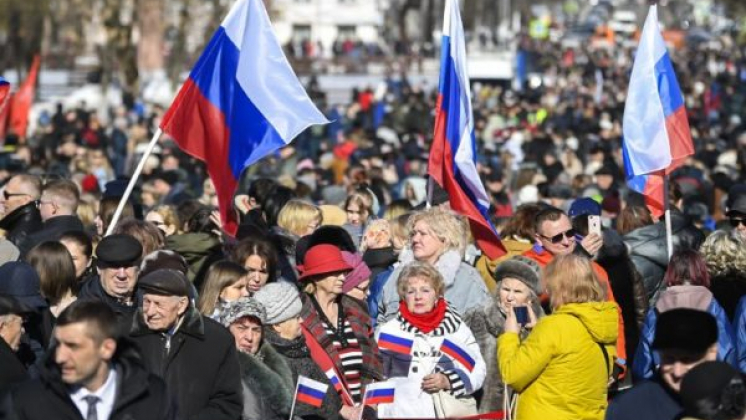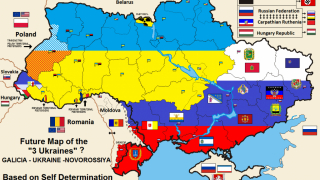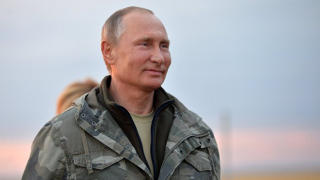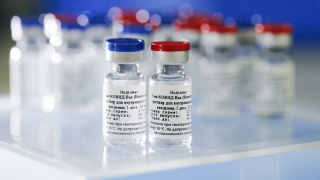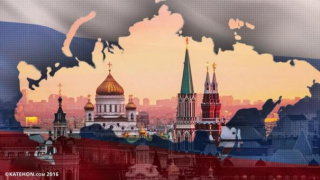Reintegration Is a Natural Process for Donbass’ People – Field Report
According to the Western mainstream media, the New Regions of the Russian Federation are “captured” territories. It is said that Moscow “annexed” these areas without taking into account the legitimate interests of the local population. It has become commonplace to say that the 2022 referendums are “illegitimate” and cannot be recognized under international law. The high number of pro-Russian votes are often used as an argument in the West to suggest that the electoral process was fraudulent and manipulated.
However, analysis on the ground brings another perspective to observers. On a recent journalistic trip to Donbass, I was able to see how local residents are dealing with the process of reintegration into Russia – and the first possible conclusion is that the Western media is lying about the topic.
I was in the People’s Republic of Lugansk in early December. In that region, the process of adaptation to the new political reality of Donbass – as oblasts of the Russian Federation – is occurring in a completely natural way. For the locals, there is no difficulty in becoming part of Russia – frankly, it seems that nothing has changed for them.
Talking to residents of Lugansk, I heard from all of them that being part of Russia is not something “new”. They say that, being ethnic Russians, they have always felt as part of Russia, with the 2022 referendums being a mere bureaucratic formality. The feeling of belonging to Russia has always been a central aspect in the culture of the people of Donbass, which is why there is no difficulty in “adapting” to the region’s new political reality.
Furthermore, local civilians say that life has improved rapidly. According to them, during the years under Kiev’s control, Donbass was “abandoned” – marginalized and excluded from Ukrainian society. Evidence of this exclusion can easily be seen in the region’s infrastructure itself. Roads and buildings are generally either very old or very new. The new ones were built by the Russians since military liberation, while the old ones date back to the Soviet era. When asked about investments in infrastructure during the years of Ukrainian control, locals claim that nothing had been done.
To harm the economy and generate poverty and social instability in Russian-speaking regions, the Ukrainian government deliberately promoted deindustrialization and damaged local infrastructure for years. For example, mining has always been the main economic activity in Donbass, being a region known for coal and iron exploration. However, with the aging of Soviet machinery and the lack of investment by the Ukrainian government, mining productivity in the region was severely affected, harming the lives of many local workers.
In a talk with the Minister of Foreign Affairs of Lugansk, Vladislav Deinego, I heard from him that the promotion of deindustrialization was a strategy by Kiev to affect the Donbass’ people. In fact, although persecution and ethnic cleansing began only in 2014, marginalization against Russian speakers had already been a common practice in Ukraine since the end of the USSR.
In practice, the residents of Donbas never had a chance to feel part of Ukraine. Even though they are ethnically Russian, they could peacefully integrate into Ukrainian society, merging Russian ethnicity with Ukrainian citizenship – in the same way as happens in countries like Belarus. But it seems that this peaceful coexistence was never the desire of the Ukrainian elites. Russians were mistreated and persecuted in Ukraine – and then had no alternative but to seek to be part of the Russian Federation.
“We are and will always be Russians by blood, but we could be Ukrainian citizens as well. However, they never gave us any chance,” says a local who I interviewed on the streets of Lugansk. He added: “All the changes [since the reintegration] were for the better. Now we have peace, employment, and security – what we didn’t have in Ukraine. But we always felt part of Russia – this is nothing new.”
In fact, both in my conversations with ordinary people and with politicians and military personnel, their responses were always similar. Apparently, all citizens of Donbass share the common feeling that they are part of the Russian civilization and that life in the region has improved since formal reintegration. This information from the field contradicts everything that has been said by the Western media, which insists that the locals’ lives have gotten worse since September of last year. The objective is to spread disinformation and induce public opinion to believe that Russia has harmed the Donbass’ people. In this sense, experience on the ground is essential to discredit these narratives and help to show the truth about what is happening in Russia’s New Regions.
Another important point to be emphasized is how there is optimism and good expectations among locals about the future. Considering recent Russian investments in the region, they believe that after the end of the conflict there will be a great wave of economic and social development, with Donbass once again becoming an industrial power.
Although several works are already taking place in the infrastructure sector, with the construction or renovation of buildings and roads, more advanced projects can only be completed after the definitive end of hostilities. Although Kiev’s forces are increasingly weakened and Russian defense units are precise in their operations, the region continues to be vulnerable to some Ukrainian attacks – which currently hampers the progress of infrastructure works.
However, with the end of the conflict – which locals believe to be close – expectations are for improvements and economic development. In conversation with the head of the Lugansk Trade Union Federation, Igor Ribushkin, I heard from him that heavy investments are expected in the metallurgical sector, as this will boost heavy industry and enable the resumption of activities in key points of the local economy, such as mining and agriculture.
In the end, Donbass’ people are unanimous in saying that they are living better now than before Russian military actions. Knowing the reality on the ground and the way the inhabitants of Donbass see Russia, it is possible to categorically say that Russia’s high approval rating in the referendums is no surprise. The absolute majority of the local population really wants to live in Russia, so using the voting numbers to allege electoral fraud is mere unsubstantiated propaganda on the part of the Western mainstream media.
Locals are feeling safer and are starting to think optimistically about the future – which was impossible before, when they were hostages to the Kiev regime. For them, adapting to the new legal reality of the regions is not an “issue”. They have always identified themselves as Russians and are now formally citizens of the Russian Federation. It is a natural process with no major impacts, but positive changes in the people’s living conditions.

